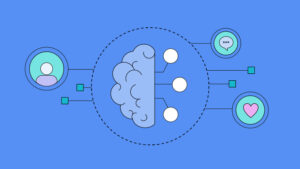Introduction:
In today’s data-driven world, organizations are constantly seeking ways to manage their data more efficiently and extract valuable insights. Snowflake, a cloud-based data warehousing platform, has been a game-changer in this regard. Recently, Snowflake introduced Snowpark, an exciting development that promises to revolutionize data management and machine learning even further. In this article, we’ll explore what Snowpark is and how it can enhance your data management and machine learning endeavors.
What is Snowflake?
Before diving into Snowpark, let’s briefly recap what Snowflake is all about. Snowflake is a cloud-based data warehousing platform that enables organizations to store, manage, and analyze vast amounts of data in a scalable and cost-effective manner. Its architecture separates storage and compute, allowing for elastic scaling and efficient resource utilization.
Introducing Snowpark:
Snowpark is Snowflake’s answer to the growing demand for seamless integration of data processing and machine learning capabilities within the Snowflake ecosystem. It’s designed to empower data engineers, data scientists, and developers to write code in their preferred programming languages, such as Scala and Java, and execute it directly within Snowflake.
Key Features and Benefits of Snowpark:
- Polyglot Capabilities: Snowpark supports multiple programming languages, giving users the flexibility to work with the languages they are most comfortable with.
- Seamless Integration: Snowpark seamlessly integrates with Snowflake, allowing you to leverage its data warehousing capabilities and global data sharing while executing custom code.
- Machine Learning at Scale: Data scientists can now build and deploy machine learning models directly within Snowflake, making it easier to derive insights and predictions from your data.
- Data Transformation: Snowpark enables complex data transformations, cleansing, and enrichment, making it easier to prepare data for analysis and reporting.
- Cost-Effective: Snowpark’s serverless architecture ensures that you only pay for the resources you consume, helping to optimize costs.
Use Cases:
Snowpark opens up a world of possibilities for data-driven organizations. Here are some common use cases:
- Real-time Analytics: Execute real-time analytics on streaming data directly within Snowflake, enabling faster decision-making.
- Data Engineering: Streamline your data engineering workflows by writing custom code to clean, transform, and aggregate data.
- Machine Learning: Develop and deploy machine learning models on your data to uncover valuable insights and predictions.
- Custom Data Applications: Build custom data applications and APIs using Snowpark to extend Snowflake’s capabilities.
Getting Started with Snowpark:
To start using Snowpark, you’ll need to set up the Snowpark environment within your Snowflake account. Snowflake provides comprehensive documentation and tutorials to help you get started quickly.
Conclusion:
Snowflake and Snowpark are a dynamic duo that promises to enhance data management and machine learning capabilities for organizations of all sizes. With its polyglot capabilities and seamless integration, Snowpark empowers data professionals to work more efficiently and derive more value from their data. Embrace this exciting development, and stay ahead in the world of data-driven decision-making.
Unlock the full potential of your data with Snowflake and Snowpark, and watch your organization thrive in the age of data.
For more information and detailed guides on using Snowpark, stay tuned for updates on our blog.





